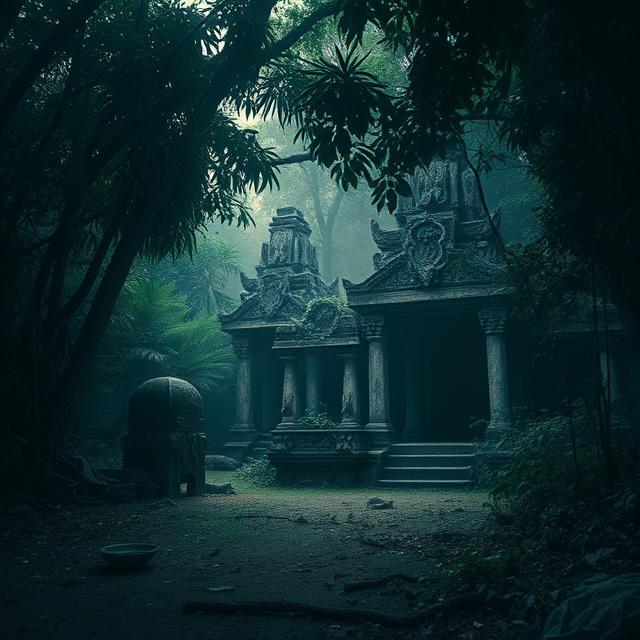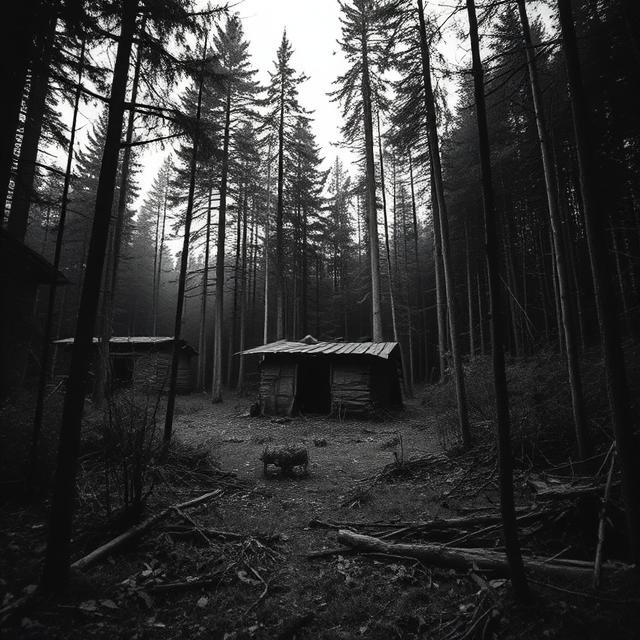Deep within the suffocating embrace of an unnamed, remote jungle, where the canopy swallows the sun and ancient secrets linger in the humid air, whispers tell of a cult unlike any other: The Temple of the Four Serpents. This enigmatic group, led by a shadowy figure and bound by esoteric beliefs centered around serpentine deities, is said to have built a secluded sanctuary, drawing in desperate seekers and disillusioned souls. But the true chilling heart of their legend lies not in their rituals or prophecies, but in their ultimate, perplexing act: the entire commune, without a trace, purportedly vanished overnight, leaving behind only an untouched temple, unsettling artifacts, and a profound, echoing silence. The tale of the Temple of the Four Serpents, whether a lost historical truth or a compelling piece of dark folklore, forces us to confront our deepest fears of fanaticism, manipulation, and the unsettling possibility of collective disappearance into the abyss of the unknown.
The precise origins and location of the Temple of the Four Serpents are deliberately vague in the few fragmented accounts that circulate, adding to its mystique. The narrative typically places it in an inaccessible jungle region, perhaps in South America or Southeast Asia, far removed from modern civilization. This isolation is crucial to the legend, allowing the cult to develop its unique beliefs and practices without external scrutiny, fostering an environment ripe for absolute control.
At the heart of the Temple was its elusive leader, often referred to only as “The Serpent Master” or “The Oracle of Scales.” This figure was invariably described as charismatic and possessing an almost hypnotic influence over followers. They would have preached a syncretic doctrine, blending ancient indigenous mysticism with elements of Gnosticism, pre-Columbian mythology, and New Age spiritualism. Central to their cosmology was the reverence, or perhaps fear, of “Four Serpents”—primordial deities, elemental forces, or perhaps literal reptilian beings, whose favor was essential for salvation or ascension.
The Temple’s ideology likely hinged on a particular interpretation of an impending global shift or apocalypse. The Four Serpents were presented as either guardians of a hidden truth, arbiters of judgment, or facilitators of a unique transformation that would allow chosen followers to transcend the coming destruction. Life within the commune would have been arduous, marked by strict adherence to the Serpent Master’s rules, elaborate rituals involving serpent symbolism, and perhaps the use of psychoactive substances to induce altered states of consciousness, further cementing the leader’s control and deepening the members’ conviction in the cult’s esoteric truths.
The chilling core of the legend, however, lies in the collective vanishing. The narrative recounts that external search parties—perhaps curious relatives, disillusioned former members, or even local authorities—eventually located the elusive compound. But upon arrival, they found not a thriving commune, nor a scene of violence, but an unnerving emptiness. The temple structures stood intact, personal belongings were left behind as if their owners had simply stepped away for a moment, and ritualistic altars were found untouched. Yet, every single member, from the Serpent Master down to the newest acolyte, had simply vanished. No bodies, no signs of struggle, no trails leading away into the dense jungle. It was as if they had been instantly absorbed by the very wilderness they sought to understand.
The surrounding jungle, typically a place of vibrant life, became a silent accomplice to the disappearance. Its impenetrable canopy and vastness seemingly swallowed all evidence, leaving behind only the chilling quiet of absence. The lack of any logical explanation—no mass graves, no evidence of an external attack, no signs of a mass exodus—fueled the terrifying speculation that something entirely otherworldly or supernaturally precise had occurred.
The theories attempting to explain the alleged vanishing of the Temple of the Four Serpents are as varied and fantastical as the legend itself:
- Collective Ascension/Transmutation: The most compelling theory within the cult’s own narrative would be that they successfully achieved their promised “ascension.” Through their rituals and the favor of the Four Serpents, they transcended physical reality, moving to another dimension, a hidden plane of existence, or even transforming into new, non-human forms. The untouched temple would then be a monument to their successful, albeit terrifying, spiritual journey.
- Abduction by Extraterrestrials/Interdimensional Beings: Given the “clean” nature of the disappearance, some might speculate about extraterrestrial intervention. Perhaps the Four Serpents were indeed alien entities, and they came to collect their followers for a journey to another world or dimension.
- Mass Suicide/Ritualistic Death and Concealment: A more grounded, yet still horrifying, possibility is that the members engaged in a mass suicide, similar to Jonestown, but that their bodies were meticulously and completely disposed of afterward. The dense jungle environment could conceal such an act, or perhaps the Serpent Master had a system for dissolving or removing remains.
- Mass Murder and Masterful Cover-Up: An external force, perhaps a rival group, drug cartel, or even rogue government agents, could have massacred the entire commune and then expertly erased all physical evidence, leading to the “vanished” appearance. However, the lack of signs of struggle still makes this challenging.
- Deliberate, Secretive Dispersal: The leader might have orchestrated a highly clandestine and widespread dispersal of the group, perhaps into small, undetectable cells, intending to regroup later. This would require immense planning and loyalty.
- Exaggerated/Fictional Narrative: Ultimately, the most plausible explanation for such a precisely “clean” and complete disappearance, given the lack of any historical records or verifiable investigation, is that The Temple of the Four Serpents is a meticulously crafted urban legend or creepypasta. Such stories tap into primal fears of cults, the unknown dangers of remote places, and the chilling concept of entire groups of people simply ceasing to exist. The vagueness of detail and the focus on “what if” makes it profoundly unsettling.
The narrative of the Temple of the Four Serpents, whether it be fact or fiction, serves as a powerful and deeply unsettling thought experiment on the power of belief and the terrifying implications of absolute devotion. It forces us to confront the vulnerabilities that draw individuals to cults, the extreme measures leaders might take, and the chilling silence that can fall when a group steps beyond the bounds of known reality. The jungle remains silent, holding its secrets close, forever echoing the untold fate of the vanished flock from the Temple of the Four Serpents.
Want to explore the shadows even deeper? For more chilling cases like this, visit SinisterArchive.com, where the legends are real.




